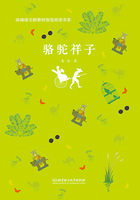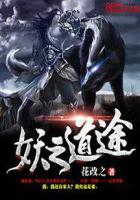Salt-water communities are found in salt-water oceans and seas. Some communities are near the surface; others are in deep water. Living things in the sea are of three groups. Those which can swim strongly against a current include fish, squid, and whales. The second group is made up of all the plants and animals that live on the ocean floor. Here one will find such life as seaweed, crabs, and starfish. The third group is plankton which is the most important. Plankton are so small that they can be seen only with a microscope. Many sea animals depend on plankton for life.
Another type of community is the river community. A river provides a habitat for many kinds of living things. Plants, insects, and fish live in the water, on the surface, and on the riverbanks.
Field communities may be near rivers, or they may be fields that have never been upset by man, far from natural lakes or rivers. In the field communities one may find rabbits, chipmunks, and prairie dogs. The prairie dogs live in underground homes. They live in groups in homes that are like houses with many rooms.
The desert is a true community of many different plants and animals living together. Cactuses, mesquite, sagebrush, and wild flowers are a few of the plants that live in desert communities. Many mammals are found in desert communities such as jack rabbits, pack rats, prairie dogs, mule deer, and camels. Since these desert areas are very hot and dry, animals living there get most of their moisture form their food.
A forest is a very special kind of community. Here plants and animals live on three levels. The tree branches are at the top level, plants are at the middle level, and ferns and berries are found at the lower level. Among the forest dwellers you would find squirrels, chipmunks, porcupines, raccoons, and opossums. You might also find grouse, deer, foxes, and bears. Many kinds of birds, insects, and flowers inhabit the forest.
Vocabulary 词汇
biologist [bai"?l?d?ist] n. 生物学家
current ["k?r?nt] adj. 现在的、通行的;
n. 水流、气流、电流、倾向
squid [skwid] n. 乌贼、墨鱼
whale [hweil] n. 鲸、鲸鱼
seaweed ["si:wi:d] n. 海草、海藻
crab [kr?b] n. 蟹
starfish ["stɑ:fi?] n. 海星(一种海洋动物)
plankton ["pl??kt?n] n. 浮游生物
habitat ["h?bit?t] n. (动物的)栖息地、住处
riverbank ["riv?b??k] n. 河、河岸
upset [?p"set] vt. & vi. 打翻;
vt. 扰乱、使苦恼;
n. 扰乱、不适;
adj. 心烦的、不适的
chipmunk ["t?ipm??k] n. 金花鼠
prairie dog n. 草原土拨鼠
cactus ["k?kt?s] n. 仙人掌、仙人球
mesquite ["meski:t] 豆科植物
sagebrush ["seid?br??] n. 灌木蒿、灌木蒿丛
jack rabbit n. 〈美〉(北美洲产的)长腿大野兔
pack rat n. 什么东西都不肯扔的人、林鼠(或称“收集鼠”)
mule deer n. 长耳鹿、黑尾鹿、驼鹿
camel ["k?m?l] n. 骆驼
moisture ["m?ist??] n. 水分、水气、湿气;
vt. 使防潮
fern [f?:n] n. 〈植〉羊齿植物、蕨类植物
berry ["beri] n. 浆果
dweller ["dwel?] n. 居住者、居民
squirrel ["skwir?l] n. 松鼠
porcupine ["p?:kjupain] n. 豪猪、箭猪
raccoon [r?"ku:n] n. 浣熊、浣熊毛皮
opossum [?"p?s?m] n. 尾有卷握力的小有袋动物、负鼠
grouse [ɡraus] n. 松鸡、松鸡肉;
vi. 抱怨、发牢骚
Practice
1.What are the six kinds of natural communities described in this text?
2.Match these words.
a.crab b.rabbit c.ferns d.starfish
A.forest community B.field community C.salt-water community
译文
当我们提到社区时,通常会想到人们居住的城镇。然而,生物学家所认为的社区是指植物和动物共同生活的环境。每一种生物都有其作用,并被安置在生态群落中。
海水社区在很咸的海洋中存在。一些群落在海水表面,另一些在深水中。海水中的生物有三个群体:那些可以逆流而上游动的包括鱼、墨鱼和鲸鱼;第二类由生活在海底的所有植物和动物构成,在这里,人们可以发现诸如海带、蟹和海星这样的生物;第三组是浮游生物,它们是最重要的。浮游生物是如此的小,以至于它们只有在显微镜下才能被看到。许多海洋生物都靠着浮游生物生存。
另一种类型的社区是河水群落。河流为许多种生物提供了栖息地。植物、昆虫、鱼类生活在水中,有的在表面,有的在河边。
野生社区可能临近河流,也可能是一片从来没有被人打扰过的田野,远离天然湖泊或河流。在这个生物群落中,人们可以发现野兔、金花鼠和草原土拨鼠。草原土拨鼠成群地生活在地下的家中,它们的家园就像是有许多房间的房子。
沙漠是一个真正的有许多不同的植物和动物生活在一起的社区。仙人掌、豆科灌木、灌木蒿丛和野生花卉是生活在沙漠群落中的少数植物。在沙漠社区中,我们可以发现许多哺乳动物,比如长腿大野兔、林鼠、土拨鼠、骡鹿、骆驼。由于这些沙漠地区非常炎热干燥,生活在那里的动物所需的大部分水分都是从自己的食物中获得的。
森林是一个非常特殊的社区。这里的植物和动物生活在三个平面上。树枝是最高层面,植物在中间层面,蕨类植物和浆果在最低层面。在森林居民中,你可以发现松鼠、金花鼠、豪猪、浣熊和负鼠。你还可能会发现松鸡、鹿、狐狸和熊。许多种鸟类、昆虫和花卉都居住在森林中。
练习
1.文中提到了哪六种自然社区?
2.搭配下列词语。
a.蟹
b.兔子
c.蕨类 植物
d.海星
A.森林社区
B.野生社区
C.海水社区
1.salt-water community, river community, field community,
desert community, forest community, human community.
2.a→C b→B c→A d→C
03 Mice Prefer Treats They Worked Harder to Get 努力过后 收获更甜
Maybe your dad said: “The harder you work for something, the more you’ll appreciate it.” Well, father really did know best. Because a new study finds that the harder mice have to work for a treat, the better it tastes.
Mice were trained to push levers to get either of two rewards. Press one lever, out comes a drop of sugar water. Press the other and they get a drop of different tasting sugar water.
Then things got interesting. For one of the treats, scientists gradually increased the amount of effort required for the payoff—from one lever-press to five, then 10, then 15. So by the end of the session, one type of sugar water cost 15 times more effort than the other.
The mice then retired to their home cage where both treats were freely available. And they showed a strong preference for whichever reward they’d worked harder to obtain. Based on how fast the mice sipped, they appeared to find the costlier sugar water more tasty.
Which makes evolutionary sense. An animal wouldn’t survive if a little hard work left a bitter taste in its mouth.
Vocabulary 词汇
appreciate [?"pri:?ieit] vt. 欣赏,鉴别,领会;
vi. 增值,涨价
mice [mais] n. 老鼠(mouse的复数)
levers ["lev?z] n. 杠杆,手段(lever的复数);
v. 用杠杆撬动(lever的第三人称单数)
retired [ri"tai?d] adj. 退休的,幽闭的;
v. 退休(retire的过去分词)
evolutionary ["i:v?"lu:??n?ri] adj. 进化的,发展的,渐进的
Practice
Talk about your view on this experiment.
译文
你老爸可能说过:“你越努力为某样东西工作,你就越欣赏它。”很好,你父亲确实知道得很多。因为一项新的研究发现,老鼠越努力去得到某种食物,这种食物味道就越好。
研究人员训练老鼠去推动控制杆,推动之后能得到两种报酬中的一种——推动第一个控制杆,就会渗出一滴糖水;推动第二个控制杆,它们则能得到另一滴不同味道的糖水。
然后事情开始变得有趣了。科学家逐渐加大获得其中一种糖水的难度,从刚开始的推动一次控制杆,到后来的推动五次、十次……再到最后要你推动十五次。因此,在实验的最后时间里,获得这种糖水消耗的精力是获得另一种的十五倍。
随后这些老鼠回到它们的笼子里,这时两种糖水都是无偿供应的。老鼠们对那种更难获得的糖水表现出强烈的偏爱。根据它们喝水的速度推断,看来老鼠们觉得代价更高的糖水味道更好。
这结果有着一定的进化意义。假如加倍努力只能换来满嘴的苦涩,那这种动物就不会努力让自己存活下来了。
练习
谈谈你对这个实验的看法。
04 Pigeons Gamble on Unlikely Jackpot “嗜赌成性”的鸽子
Blackjack, slot machines, Texas hold’em. People love to gamble. And we’re not the only ones. Study shows that pigeons will also pass up a sure thing in the hopes of a big payoff.
Theories about foraging say that animals should stick with the proverbial bird in the hand, especially when it comes to food. Eating is key to survival, so clever critters shouldn’t take unnecessary chances. But these new findings suggest that pigeons don’t always play it safe.















